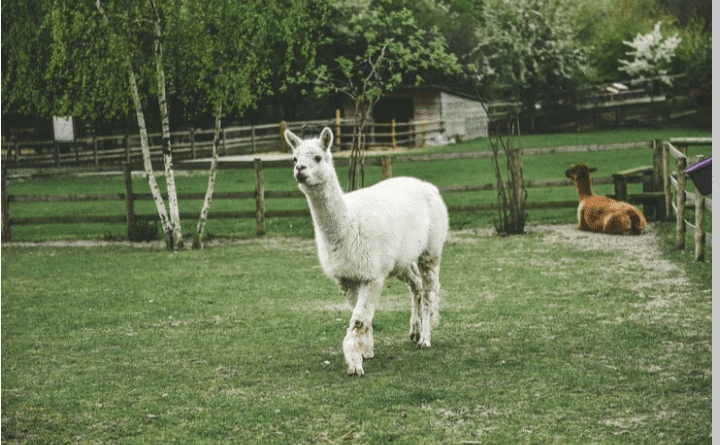Alpaca Alpaca Alpaca: The Softest and Smartest Animal You’ll Ever Meet
Introduction
There’s something magical about the alpaca alpaca alpaca — a gentle creature known for its big eyes, fluffy coat, and friendly nature. Originally from South America, this animal has captured the hearts of people all around the world. From farms to fashion brands, alpacas are becoming a symbol of comfort, softness, and sustainability.
If you’ve ever seen an alpaca, you know how cute and calm they look. But there’s more to them than just looks. The alpaca alpaca alpaca is not only beautiful but also highly intelligent and eco-friendly. Whether you’re interested in their luxurious fleece or their peaceful personality, alpacas are fascinating creatures that deserve the spotlight.
What is an Alpaca Alpaca Alpaca?
An alpaca alpaca alpaca is a domesticated animal that belongs to the camelid family — the same family as llamas and camels. Native to the Andes Mountains in Peru, Bolivia, and Chile, alpacas thrive in cold, high-altitude areas. They have been bred for thousands of years for their soft and warm wool, known as “alpaca fleece,” which is highly prized in the textile industry.
Unlike llamas, alpacas are smaller, gentler, and mainly kept for their fiber rather than as pack animals. There are two main types of alpacas:
- Huacaya Alpaca – Has fluffy, teddy-bear-like fleece.
- Suri Alpaca – Has silky, shiny, and long fiber that hangs in beautiful locks.
The Soft and Sustainable Fleece
The fleece of an alpaca alpaca alpaca is one of the most valuable natural fibers in the world. It’s softer than wool, warmer than cotton, and hypoallergenic — meaning it doesn’t cause skin irritation. Many luxury brands now use alpaca fiber in scarves, sweaters, and blankets because of its durability and shine.
Even more impressive, alpaca wool is eco-friendly. Alpacas are gentle grazers — they eat without uprooting grass and have padded feet that don’t harm the land. Their fleece is completely renewable and biodegradable, making it perfect for those who love sustainable fashion.
Alpaca Behavior and Personality
The alpaca alpaca alpaca is one of the calmest animals you’ll ever meet. They are social creatures who love to live in herds. Alpacas rarely fight and communicate using gentle humming sounds. They can even recognize their caretakers and respond to their names when trained with love and patience.
Alpacas are also incredibly clean animals. They usually choose one area for waste, making it easy for farmers to keep their pastures tidy. This neat behavior, combined with their charming looks, makes them ideal for small farms and petting zoos.
Why Are Alpacas So Popular Worldwide?
In recent years, the alpaca alpaca alpaca has gained global fame for several reasons:
- Luxury Fiber: Their fleece is used in high-end fashion.
- Therapy Animals: Their gentle nature helps reduce stress and anxiety.
- Eco-Friendly Farming: Alpacas support sustainable agriculture.
- Tourism: Alpaca farms attract thousands of visitors yearly.
- Adorable Looks: Who can resist those fluffy faces?
Many people visit alpaca farms to experience their calm energy and take cute selfies. Some even “adopt” alpacas online to support ethical animal care.
Caring for an Alpaca Alpaca Alpaca
If you ever dream of owning an alpaca, there are a few things to know:
- Space: Alpacas need open fields to graze and move freely.
- Companionship: Never keep a single alpaca alone — they thrive in groups.
- Feeding: They mostly eat grass and hay and drink plenty of water.
- Health: Regular checkups and shearing (once a year) are important.
- Shelter: They need shade and dry space, especially during rain or snow.
Caring for an alpaca alpaca alpaca is simple if you treat them with love and respect. They reward you with warmth, friendship, and plenty of smiles.
Alpaca in Culture and Economy
In countries like Peru, alpacas are deeply rooted in tradition. Their fleece was once reserved for Incan royalty, symbolizing wealth and power. Today, the alpaca alpaca alpaca plays a big role in the local economy. Thousands of families make a living through alpaca farming, spinning, and weaving.
Globally, alpaca products are now part of the ethical fashion movement, promoting natural fibers over synthetic ones. As people become more aware of climate change and sustainability, alpacas are becoming the new stars of eco-luxury.
Fun Facts About Alpacas
- Alpacas live up to 20 years on average.
- They communicate using body language and humming sounds.
- Baby alpacas are called crias.
- They come in 22 natural colors, from white to jet black.
- An alpaca’s fleece is 3x stronger than sheep wool.
These fun facts make the alpaca alpaca alpaca even more interesting to learn about and admire
Conclusion
The world of the alpaca alpaca alpaca is filled with charm, warmth, and sustainability. From their silky fleece to their peaceful nature, these animals truly represent harmony with nature. They teach us how living simply and kindly can make a big difference.
Whether you’re an animal lover, eco-conscious shopper, or travel enthusiast, alpacas are worth your attention. Visiting an alpaca farm, wearing alpaca wool, or simply learning about them can bring joy and inspiration to your life. The more we appreciate these gentle creatures, the better we understand how nature gives us everything we need — softly, naturally, and beautifully.
FAQs About Alpaca Alpaca Alpaca
Q1: What do alpacas eat?
Alpacas mainly eat grass, hay, and sometimes grains. They also drink fresh water daily.
Q2: Are alpacas friendly to humans?
Yes, alpacas are calm and friendly animals. They enjoy gentle handling and socializing with humans.
Q3: Can alpacas live in cold weather?
Absolutely! Alpacas come from the Andes Mountains, so they are well-suited for cold and windy climates.
Q4: How often do alpacas need to be sheared?
Once a year, usually in spring, to keep them cool and maintain healthy fleece growth.
Q5: Are alpacas good for the environment?
Yes! Alpacas are sustainable animals — their soft feet protect soil, and their wool is eco-friendly and biodegradable.
